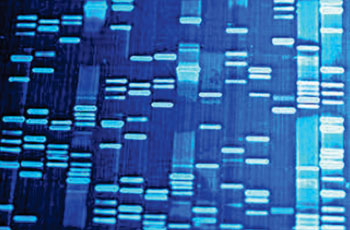Glucocorticoid Receptor Suppresses Tumor Formation by Ensuring Accurate Chromosome Segregation During Mitosis
By LabMedica International staff writers
Posted on 21 Apr 2015
A team of British molecular biologists has defined the mechanism by which glucocorticoid receptor (GR) regulates the process of mitosis to prevent errors in cell division that could lead to tumor formation.Posted on 21 Apr 2015
GR is a member of the nuclear receptor superfamily, which controls programs regulating cell proliferation, differentiation, and apoptosis. GR is expressed in almost every cell in the body and regulates genes controlling development, metabolism, and immune response. As the receptor gene is expressed in several forms, it has many different effects in various parts of the body. Unbound receptor resides in the cytosol of the cell. Binding of GR to glucocorticoids triggers its primary mechanism of action, which is the regulation of gene transcription. After the receptor is bound to glucocorticoid, the receptor-glucorticoid complex up-regulates the expression of anti-inflammatory proteins in the nucleus or represses the expression of pro-inflammatory proteins in the cytosol (by preventing the translocation of other transcription factors from the cytosol into the nucleus).

Image: Electrophoretic data confirmed disruption of mitosis in cells lacking GR (Photo courtesy of the University of Manchester).
Investigators at the University of Manchester (United Kingdom) identified an additional role for GR related to regulation of cell division. They discovered that specifically modified GR species accumulated at the mitotic spindle during mitosis in a distribution that overlapped with enzymes of the Aurora kinase family. They found that Aurora A was required to mediate mitosis-driven GR phosphorylation, but not recruitment of GR to the spindle. GR was necessary for mitotic progression, with increased time to complete mitosis, frequency of mitotic aberrations, and death in mitosis observed following GR knockdown. Complementation studies revealed an essential role for the GR ligand-binding domain, but no clear requirement for ligand binding in regulating chromosome segregation.
GR haploinsufficient mice (animals with only a single functional copy of the GR gene that did not produce enough of the gene product to bring about the wild-type condition) had an increased incidence of tumor formation, and these tumors were further depleted for GR, implying additional GR loss as a consequence of cell transformation. Reduced GR expression was identified in a panel of human liver, lung, prostate, colon, and breast cancers.
The unexpected role for the GR in promoting accurate chromosome segregation during mitosis marked GR as an authentic tumor suppressor gene. "Cancer is caused by cell division going wrong, but no one has previously looked at the role GR has to play in this process," said senior author Dr. David Ray, professor of human development at the University of Manchester. "It is now clear that it is vital."
The study was published in the April 6, 2015, online edition of the journal Proceedings of the National Academy of Sciences of the United States of America (PNAS).
Related Links:
University of Manchester















